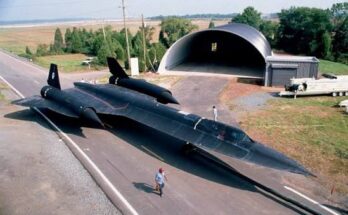
A U.S. Army AH-64D Apache Longbow attack helicopter crashed in Afghanistan during a routine operation, prompting an immediate investigation and drawing attention to the challenges of operating military aircraft in hostile and rugged terrain. The incident occurred in a remote area, and although the full details are still being confirmed, preliminary reports indicate both crew members survived the crash with injuries.
The AH-64D, a heavily armed and highly advanced combat helicopter, is known for its durability, agility, and precision capabilities in both offensive and defensive missions. It has played a central role in military operations in Afghanistan for years, particularly in providing close air support and reconnaissance for ground troops.
According to military sources, the Apache was conducting a routine patrol mission when it experienced a sudden mechanical failure or possibly took hostile fire, leading to its crash in a mountainous region. The cause remains under investigation, with officials not yet confirming whether enemy engagement or technical malfunction was to blame.

Witnesses in the area reported hearing the helicopter flying low before a sudden change in engine pitch, followed by a plume of smoke and debris. Ground forces in the region responded swiftly, securing the crash site and extracting the injured pilots. Both crew members were evacuated by medevac to a nearby military medical facility for treatment and are expected to recover.
The U.S. Department of Defense has not released the names of the pilots but confirmed that their training and quick actions likely prevented a fatal outcome. The fact that the crew was able to control the descent enough to avoid a catastrophic impact is a testament to their skill and to the robust design of the Apache.
This crash adds to the growing list of incidents involving military aircraft operating in difficult environments. Afghanistan’s harsh weather conditions, high altitudes, and unpredictable terrain pose continuous risks to even the most advanced aerial equipment. Additionally, the possibility of hostile fire, while not confirmed in this case, is always a looming threat.
The incident also raises broader questions about the wear and tear sustained by helicopters that have been in service for extended periods under combat conditions. Many AH-64Ds currently in operation have seen years of continuous use, and despite rigorous maintenance schedules, the risk of mechanical failure can never be entirely eliminated.
Military aviation analysts emphasize that while the AH-64D remains one of the most reliable helicopters in combat, no system is immune to failure, particularly in warzones. Investigators from both the Army and independent technical teams will now analyze flight data, wreckage, and maintenance records to determine the exact cause of the crash.

In the meantime, the Army has reaffirmed its commitment to pilot safety and equipment reliability. The crash site has been secured, and recovery efforts for the wreckage are underway to prevent any sensitive equipment from falling into the wrong hands.
Though fortunate to have avoided loss of life, the AH-64D crash in Afghanistan is a sobering reminder of the constant risks faced by military aviators in active duty zones. Their missions remain vital, but never without danger.
Let me know if you want this adapted for a military blog, news article, or official report format.


